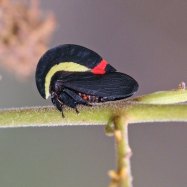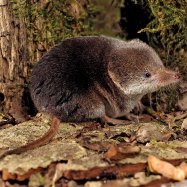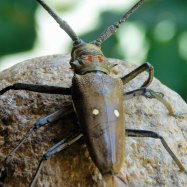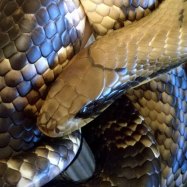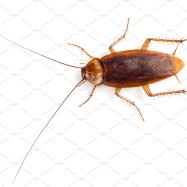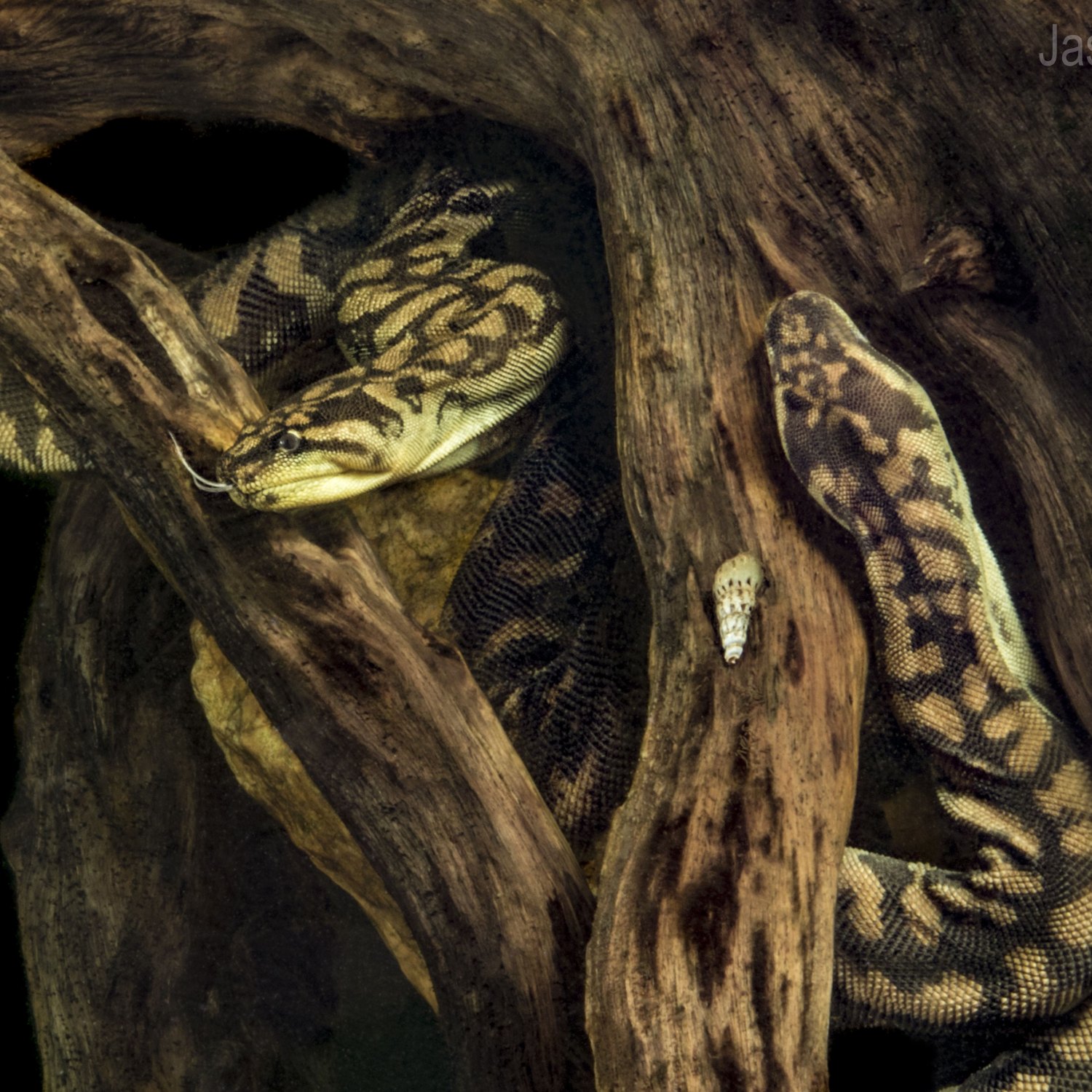
Arafura File Snake
Up to 2 meters
The Arafura File Snake is a unique species found in Northern Australia and Papua New Guinea. With a length of up to 2 meters, it belongs to the Acrochordidae family and has a robust and cylindrical body shape. Despite its intimidating appearance, it is non-venomous and feeds on fish and frogs. Considered a symbol of the region, encountering this elusive snake in the wild is a thrilling experience for any wildlife enthusiast.
Animal Details Summary:
Common Name: Arafura File Snake
Kingdom: Animalia
Habitat: Freshwater
The Remarkable Arafura File Snake: A Powerful Hunter in the Depths of Northern Australia and Papua New Guinea
Hidden within the dark, murky waters of Northern Australia and Papua New Guinea lies a unique and powerful predator - the Arafura File Snake. This species, scientifically known as Acrochordus arafurae, is a lesser-known but fascinating member of the animal kingdom. With its distinct appearance and intriguing mode of hunting, the Arafura File Snake has captured the curiosity of researchers and nature enthusiasts alike.The Arafura File Snake belongs to the Animalia kingdom, within the Chordata phylum and the Reptilia class Arafura File Snake. It is a member of the Squamata order and the Acrochordidae family, which includes only three other species. This family is commonly referred to as the wart or file snakes due to the unique, rough, and granular scales covering their bodies.
These serpentine creatures are exclusively found in freshwater habitats, making them a significant contributor to the diverse ecosystem of the rivers, streams, and lagoons of Northern Australia and Papua New Guinea. Their feeding method is carnivorous, and they are known to prey on a wide variety of aquatic animals such as fish, crustaceans, and frogs.
The Arafura File Snake has a limited geographical distribution, inhabiting only the northern regions of Australia and Papua New Guinea. These countries are considered the origin of this species, with most of their population located in and around the Arafura Sea - the body of water from which they derive their scientific and common names.
One of the most striking features of the Arafura File Snake is its coloration. These snakes have a dark brown to black coloration, often with lighter mottling. This unique coloration allows them to blend in seamlessly with the surrounding environment, making them excellent stealth hunters American Dog Tick. Their body shape is robust and cylindrical, with a flattened and paddle-like tail that aids in swimming.
The Arafura File Snake is a relatively large species, with adults reaching lengths of up to 2 meters. This size, coupled with their powerful bodies, allows them to take on a wide range of prey, making them apex predators in their freshwater habitat. But what sets them apart from other predators is their hunting strategy.
Unlike most snakes, the Arafura File Snake does not rely on speed or stealth to catch its prey. Instead, it uses a unique method known as longitudinal body undulation. This involves utilizing its elongated body to create a series of waves in the water, which push fish and other aquatic animals towards their waiting jaws.
Furthermore, the Arafura File Snake's jaws are equipped with rows of sharp, recurved teeth designed to grasp onto slippery prey and not let go. This, combined with their powerful constriction abilities, makes them efficient and deadly hunters. They have also been observed using their rough scales to grip onto their prey during the attack, further enhancing their hunting success.
The reproductive behavior of Arafura File Snakes is not extensively studied, but they are known to breed during the wet season, from October to December. Females lay around 12 eggs at a time, which are then incubated for 80 to 90 days until the hatchlings emerge. These snakes reach sexual maturity at around 6 to 7 years, and their lifespan can extend up to 20 years in the wild.
Despite their powerful abilities, the Arafura File Snake faces several threats and challenges in their natural habitat. One of the most significant threats is the destruction of their freshwater habitat due to human activities such as pollution and land development. Overfishing and the use of fishing nets also have a significant impact on their prey populations, ultimately affecting the snake's survival.
Additionally, the Arafura File Snake is often caught for its beautiful, patterned skin, which is used in the production of leather goods. This has led to a decline in their population in some areas where they were once found abundantly. To protect this species, it is essential to create awareness and implement conservation measures to preserve their natural habitat and prevent overexploitation.
In conclusion, the Arafura File Snake is a fascinating and remarkable species with unique characteristics and behaviors. From their distinct coloration and robust body to their powerful hunting abilities, there is much to be admired about these creatures. However, their population remains threatened, and it is crucial to take action to ensure the survival of this beautiful and valuable reptile.

Arafura File Snake
Animal Details Arafura File Snake - Scientific Name: Acrochordus arafurae
- Category: Animals A
- Scientific Name: Acrochordus arafurae
- Common Name: Arafura File Snake
- Kingdom: Animalia
- Phylum: Chordata
- Class: Reptilia
- Order: Squamata
- Family: Acrochordidae
- Habitat: Freshwater
- Feeding Method: Carnivorous
- Geographical Distribution: Northern Australia, Papua New Guinea
- Country of Origin: Australia, Papua New Guinea
- Location: Northern Australia, Papua New Guinea
- Animal Coloration: Dark brown to black, with lighter mottling
- Body Shape: Robust and cylindrical
- Length: Up to 2 meters
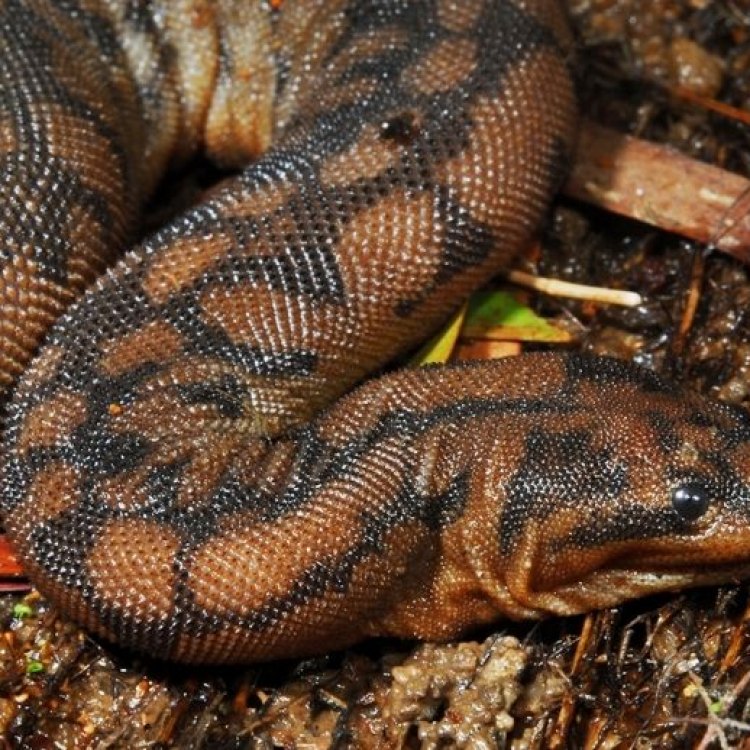
Arafura File Snake
- Adult Size: Up to 2 meters
- Average Lifespan: 25 to 30 years
- Reproduction: Viviparous (giving birth to live young)
- Reproductive Behavior: Mating occurs in water
- Sound or Call: No specific sound or call
- Migration Pattern: Non-migratory
- Social Groups: Solitary
- Behavior: Mainly nocturnal
- Threats: Habitat loss, pollution, accidental capture in fishing gear
- Conservation Status: Least Concern
- Impact on Ecosystem: Arafura File Snakes are important predators of fish, helping to regulate their populations
- Human Use: Not used directly by humans
- Distinctive Features: Loose skin with wart-like projections
- Interesting Facts: Arafura File Snakes are excellent swimmers and are often found in rivers and wetlands
- Predator: Crocodylus porosus (Saltwater Crocodile)
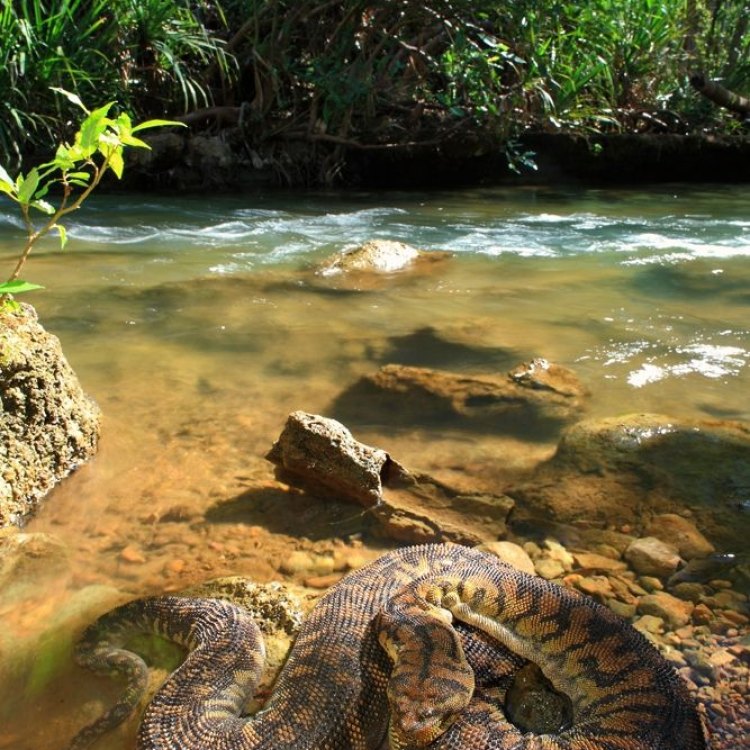
Acrochordus arafurae
The Mysterious and Fascinating Arafura File Snake
Deep in the tropical rainforests of northern Australia, there is a creature that seems to come straight out of a fantasy novel. Meet the Arafura File Snake, a unique and intriguing species that captures our imagination with its distinctive features and fascinating behaviors.This elusive snake, also known as the Arafura Class Kaphylacaris, is a member of the Acrochordidae family, a group of non-venomous aquatic snakes. It is found in the Arafura Sea, a body of water between Australia, New Guinea, and the Maluku Islands, and its close relative, the Ross River File Snake, can be found in northern and eastern Australia PeaceOfAnimals.Com.
The Arafura File Snake is a truly unique species, with a set of characteristics that make it stand out among other animals. Let’s dive deeper into the world of this mysterious and captivating snake.
The Appearance and Size of the Arafura File Snake
If you were to come across an Arafura File Snake, you might mistake it for a strange-looking eel. With its long and slender body, it can reach up to 2 meters in length, making it one of the largest species in its family. Its body has a thick and cylindrical shape, and it has a small head, measuring only a few centimeters in length.But what truly gives the Arafura File Snake its unique appearance is its loose skin, covered in wart-like projections. These ‘warts’ are actually enlarged, modified scales that help the snake to grip onto and navigate through the dense vegetation in its habitat.
The coloration of the Arafura File Snake can vary, ranging from light brown to dark gray, with some individuals having speckles or spots on their skin. This coloration allows them to blend in with their surroundings, making them difficult to spot in the wild Asian Carp.
Arafura File Snake's Reproduction and Behavior
Like most aquatic snakes, the Arafura File Snake is viviparous, which means it gives birth to live young. After a gestation period of around six months, the female will give birth to up to 30 offspring, usually in the water.Mating occurs in the water, with males competing for the attention of the females. This mating behavior is one of the few times that these solitary snakes come together, and it is an impressive spectacle to witness. The female will then give birth to live young, who are already well-developed and independent at birth.
The Arafura File Snake is mainly nocturnal, spending the majority of its time swimming and foraging for food at night. They are ambush predators, relying on camouflage and patience to catch their prey. Their diet consists mainly of fish, and they are skilled hunters, using their powerful jaws and sharp teeth to catch and swallow their prey whole.
Interestingly, despite being aquatic, the Arafura File Snake does not have gills or the ability to breathe underwater. Instead, it relies on frequent trips to the surface to take in air through a small opening in its skin, called a cloaca.
Threats to the Arafura File Snake
The Arafura File Snake is listed as Least Concern on the IUCN Red List, thanks to its large distribution and stable population. However, there are still some threats that could potentially impact the survival of this species.Habitat loss and degradation are significant threats to the Arafura File Snake. The rapid development of human activities, such as agriculture and infrastructure, has led to the destruction of their natural habitat. This, in turn, can result in a decline in their population and a decrease in their prey availability.
Pollution is another major concern for the Arafura File Snake. Chemical pesticides and pollutants from human activities can have a toxic effect on these snakes, as well as their prey. This can have an indirect impact on their population and overall health.
Furthermore, the Arafura File Snake can also become entangled in fishing gear, such as fishing nets, which can lead to accidental capture and death. As these snakes are not directly used by humans, they often go unnoticed and are not a priority for conservation efforts.
The Arafura File Snake's Role in the Ecosystem
As predators, Arafura File Snakes play a vital role in regulating the population of their main prey, fish. Through their hunting activities, they play a crucial role in maintaining the balance of the aquatic ecosystem in which they reside.Their presence also helps to control the spread of disease and parasites among the fish population, contributing to the overall health of the ecosystem. In a way, the Arafura File Snake is an unsung hero, quietly playing its part in maintaining the delicate balance of its habitat.
The Arafura File Snake and Humans
Despite its strange appearance and mysterious behaviors, the Arafura File Snake is not used directly by humans. It is not kept as a pet, and its skin is not used for leather or any other products. However, its presence in the wild does have an impact on local communities.The Arafura File Snake's diet consists mainly of fish, meaning it competes with humans for the same food sources. This can result in conflict, especially for subsistence fishers who rely on fishing for their livelihoods.
Additionally, the Arafura File Snake's ability to sense changes in its environment, such as pollution, can act as an early warning system, alerting humans to potential threats to the ecosystem and human health. This can help guide conservation efforts and protect the health of both the ecosystem and the humans who depend on it.
Distinctive Features of the Arafura File Snake
Apart from its unique appearance, the Arafura File Snake has a set of distinctive features that sets it apart from other species in its family. Its loose skin covered in wart-like projections is one key feature, but there are more to discover.The Arafura File Snake's ability to swim is also impressive, thanks to its paddle-shaped tail that helps it to navigate through the water with ease. Its retractable teeth, which fold back when not in use, allows it to swallow its prey whole without harming its own mouth.
Another interesting fact about the Arafura File Snake is that it has a special organ called the duvernoy’s gland, located at the back of its head. This gland produces a toxic substance, which the snake uses to immobilize its prey before consuming it.
The Arafura File Snake's Natural Predator
In the world of the Arafura File Snake, one creature reigns supreme as its natural predator – the Saltwater Crocodile (Crocodylus porosus). As one of the largest crocodile species in the world, the Saltwater Crocodile poses a significant threat to the Arafura File Snake.These crocodiles are opportunistic predators, and if given the chance, they will not hesitate to take down an Arafura File Snake. In turn, the snake has also evolved to avoid becoming prey, making it a fierce competitor in the ecosystem.
The Importance of Protecting the Arafura File Snake
As with any species in the wild, the Arafura File Snake plays an essential role in its ecosystem, helping to maintain its delicate balance. Its unique appearance and fascinating behaviors also make it a valuable species for scientific research, providing insight into the intricacies of the animal kingdom.However, as with many species in our rapidly developing world, the Arafura File Snake faces threats that could potentially impact its survival. It is crucial that we take steps to protect and conserve this species, not only for its own sake but for the health and stability of the entire ecosystem.
Efforts such as protecting its habitat from development, reducing pollution, and promoting sustainable fishing practices can all contribute to the conservation of this unique and mysterious creature.
In Conclusion
The Arafura File Snake is a one-of-a-kind species, with its distinctive features and behaviors that set it apart from other animals. Through its role in the ecosystem, it plays a crucial part in maintaining the delicate balance of its habitat.While it may not be a well-known or heavily researched animal, the Arafura File Snake holds a significant place in the tropical rainforests of northern Australia. It is our responsibility to protect and preserve this species, ensuring its survival for future generations to appreciate and admire its uniqueness. After all, in a world full of incredible creatures, the Arafura File Snake stands out as a truly fascinating and mysterious being.
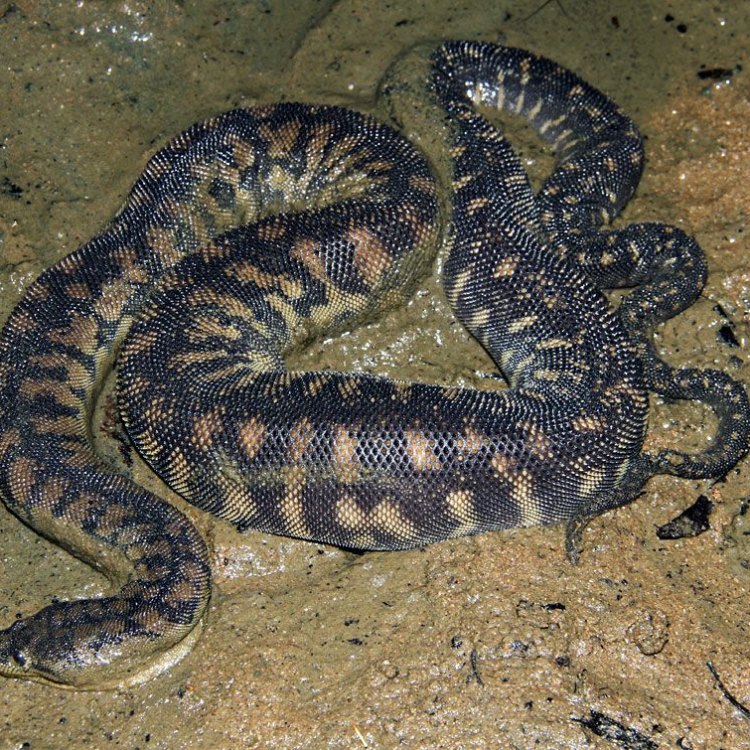
The Remarkable Arafura File Snake: A Powerful Hunter in the Depths of Northern Australia and Papua New Guinea
Disclaimer: The content provided is for informational purposes only. We cannot guarantee the accuracy of the information on this page 100%. All information provided here may change without prior notice.

